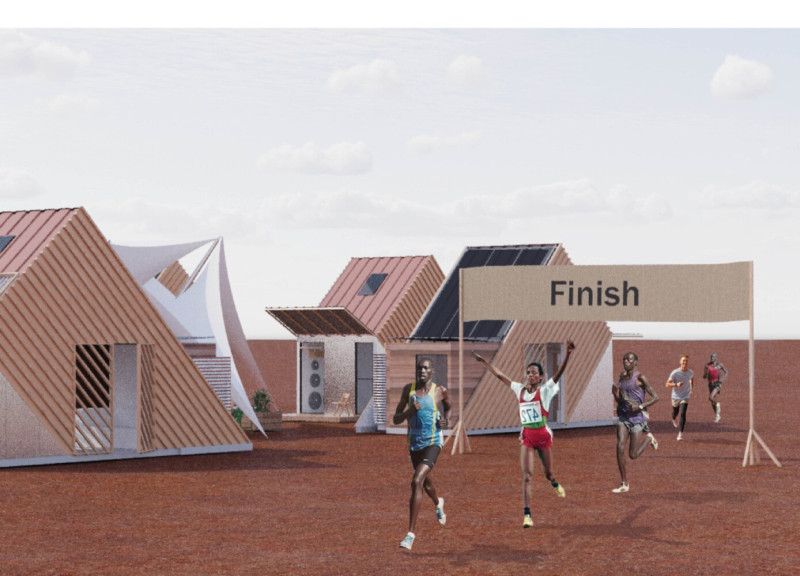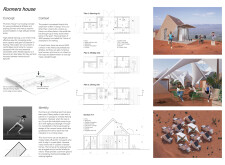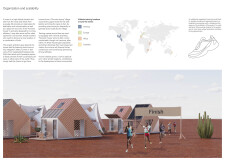5 key facts about this project
### Overview
Located in Iten, Kenya, a prominent destination for endurance training, the Runners House is designed to meet the specific needs of young professional athletes and aspiring runners. The project aims to create a sustainable housing solution that prioritizes comfort and functionality while integrating with the surrounding environment. Recognizing Iten's significance as a training hub for approximately 1,000 athletes, the design fosters a balance between individual accommodation and communal interaction, reflecting the dual nature of running as both an individual and team effort.
### Spatial Organization and User Experience
The architectural scheme comprises interconnected units that provide both privacy and opportunities for social engagement. The internal layout is versatile, accommodating essential functions such as living areas, bathing facilities, and storage, adaptable to users' immediate needs. Dedicated spaces for workouts and leisure encourage recovery and social interaction, creating a supportive atmosphere for athletes. The design emphasizes cross-ventilation and natural lighting, contributing to a comfortable indoor environment that aids athletes' daily routines.
### Materiality and Sustainability
The Runners House utilizes locally sourced and sustainable materials to minimize ecological impact while ensuring durability. Key components include wooden trusses for lightweight assembly, QuadCore AWP LEC wall panels for enhanced insulation, and rammed earth materials that provide thermal mass. The roof structure incorporates QuadCore KS1000RW LEC roof panels and solar panels, promoting energy efficiency and water management through rainwater collection systems. These choices reflect a commitment to sustainability, enabling the project to function effectively in high-altitude conditions while supporting off-grid living.






















































